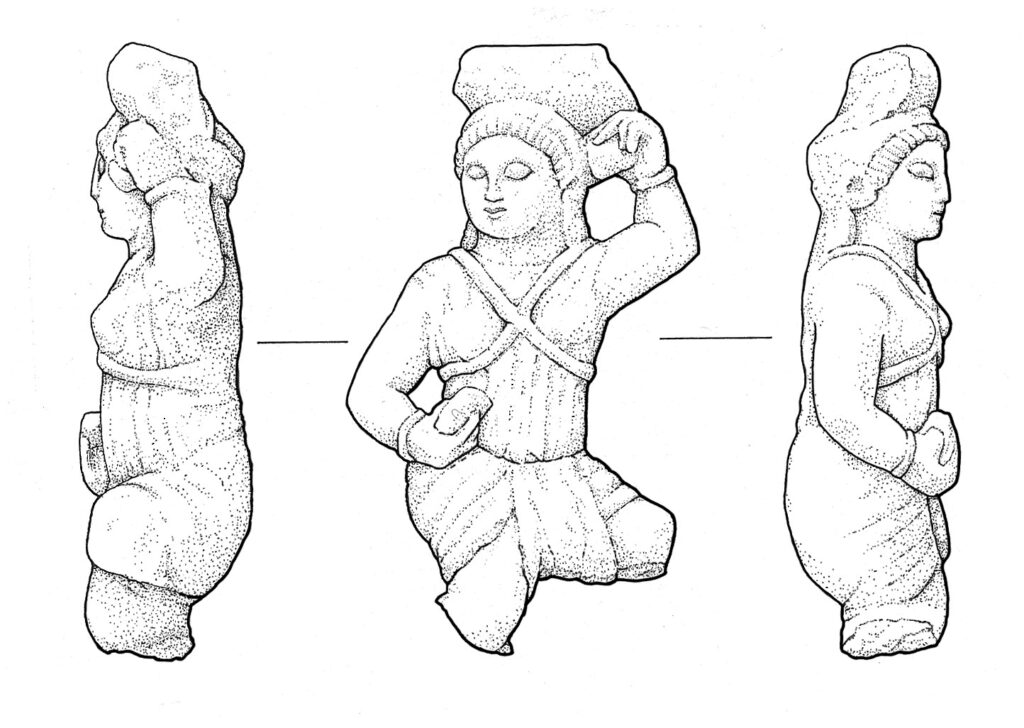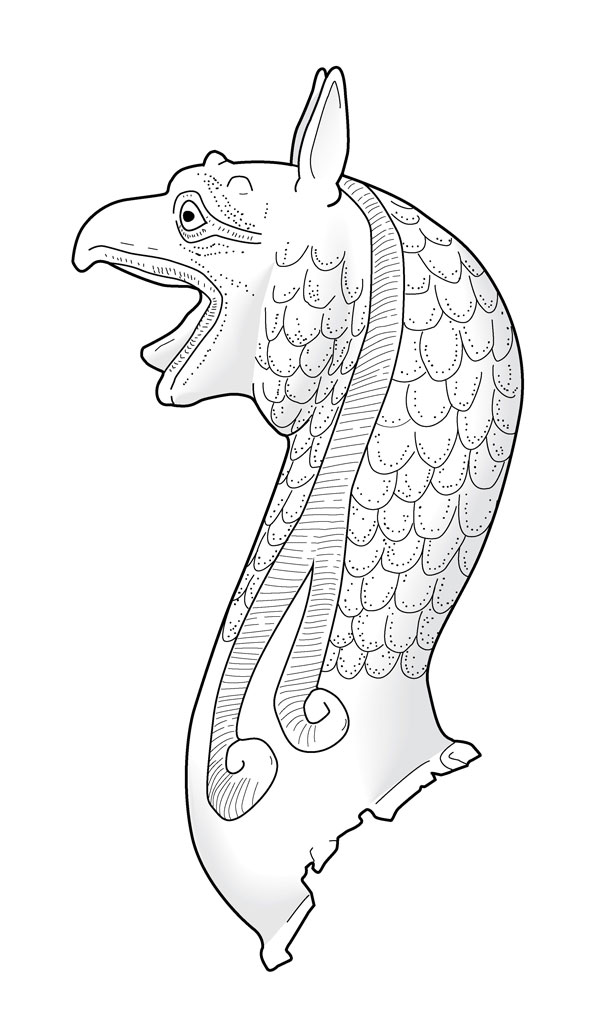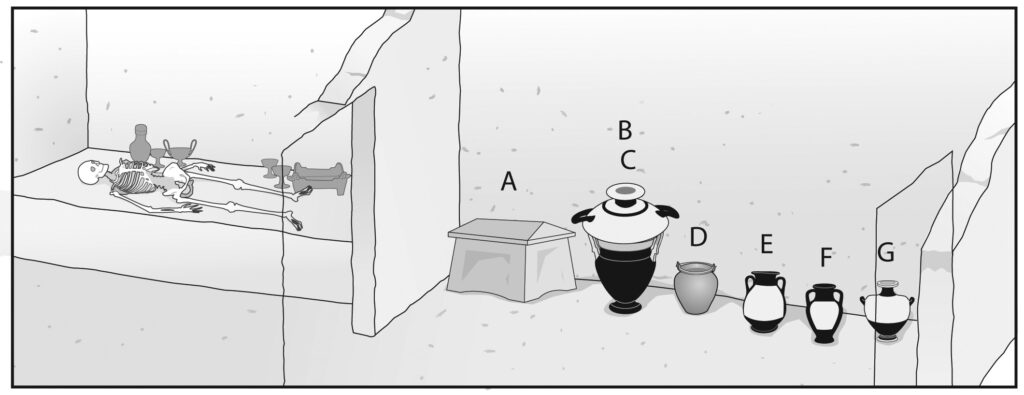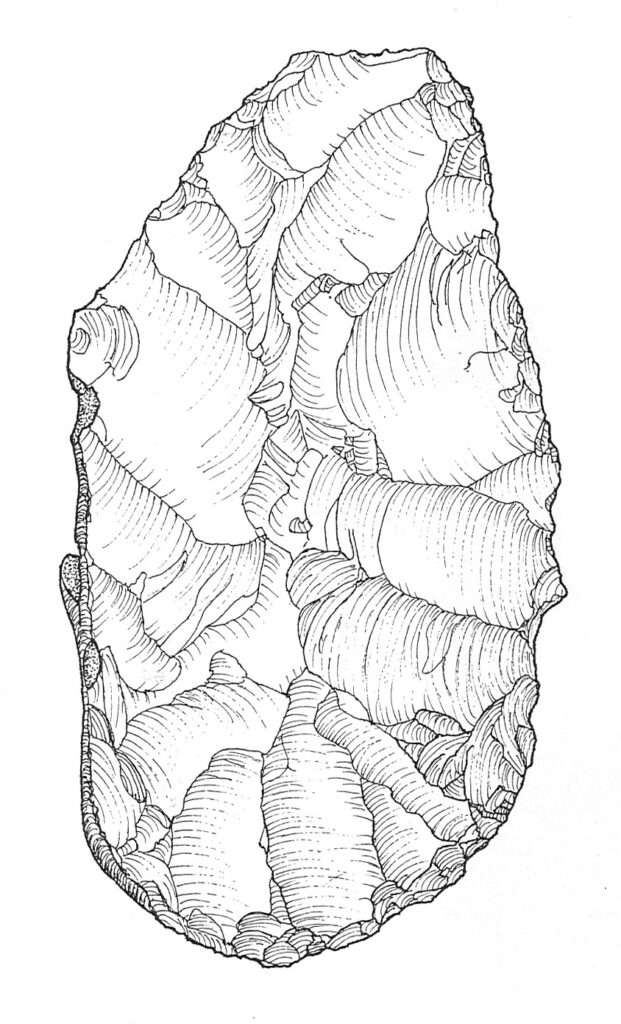
PROFESSIONAL ARCHAEOLOGICAL ILLUSTRATION
Val Woelfel – St. Paul, MN USA – 651 955-7198 – [email protected]

One of my most common tasks as an archaeological illustrator is creating detailed artifact drawings. This process starts with careful observation and measurement of the object while collaborating with the archaeologist to clarify and interpret details as needed. These illustrations play a vital role in both the analysis and documentation of archaeological finds and are essential tools for research and publication.
This example is a small Artemis figurine from Cyprus, about 10 centimeters in height. I enjoyed drawing this piece because of the challenge of accurately capturing the details of the expression on her face.
I create artifact drawings from photographs as well as working directly with the object. Drawing from photographs can present a number of challenges. The pictures are sometimes low resolution or from an angle that doesn’t include the details I need. This is often the case when my clients are limited to relying on images from old books or low-resolution pictures from the internet. When working from photographs I make sure to communicate frequently with the client to clarify details and accuracy.
I have always admired the flowing lines of Etruscan art, so it was a pleasure to draw this griffin head, which once graced a bronze cauldron.


As well as drawing individual artifacts, I collaborate with archaeologists and art historians to develop recreations of sites that put those objects back into context. Drawing reconstructions requires background research, analysis, and interpretation and is often a process of discovery for the archaeologist as their ideas become visible on the screen.
This drawing is from a publication in which it was important to represent the find spots of the pottery discussed in the article, which was found in an Etruscan tomb. Because the information from the original 19th-century excavation records was extremely limited, I worked closely with the author to develop a drawing that accurately reflected a typical Etruscan tomb assemblage from the period.
Stone tools are an artifact type where drawings are often preferred to photographs. Chipped stone can have a reflective surface that is difficult to photograph and important details are easily lost. When I draw lithics I use precise measurements and angled lighting to document the sequence and structure of the flake scars. This gives the viewer important information about the process of creating the artifact.
I drew this lithic while I was working in England, but the technique for drawing chipped stone tools is the same wherever I have worked.


Pottery is one of the most common artifact types found on archaeological sites and is a central part of my work as an archaeological illustrator. A set of standard illustration conventions for pottery have been developed to communicate information about the interior and exterior of the vessel in the same drawing as well as the thickness of the wall. In addition, these conventions create a consistent look in publications across the archaeological community.
This image is from the archaeological site of Idalion on Cyprus, where I have been illustrator since the mid-1990s. I sometimes wonder how many thousands of pot sherds I have drawn over the decades.